The VECMA Associate Partner Scheme aims to officially acknowledge our relationship with an external collaborator through a mutually beneficial arrangement. Associate Partners of the VECMA project are encouraged to participate in meetings and events, making them opportunities for exploring scientific questions of mutual interest. Our network of Core Partners, Associate Partners, and external collaborators, enables us to fully achieve the potential of VECMA.
Scheme benefits:
- Access to and provision of software, capabilities, and services, including early access to the VECMA software toolkit.
- Access to and provision of training materials.
- Invitations to project meetings.
- Invitations to our workshops.
- Invitations to our training events.
- Listing as an associate partner on the VECMA website.
- Free subscription to our quarterly Newsletter and e-Newsletter.
For enquiries or if you are interested in becoming a member, please contact Dr Apostolos Evangelopoulos.
Our membership comprises:
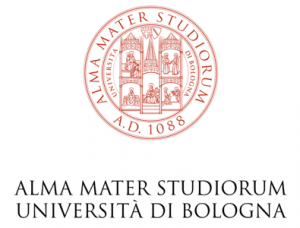
The Alma Mater Studiorum, the oldest university in the Western world, paves the way for innovation through an increasingly rich programme catalogue, cutting-edge research and a constant and increasingly broad international perspective. Since its origins in 1088, Alma Mater has been student-centred hosting prominent figures from science and the arts. Based in five campuses (Bologna, Cesena, Forlì, Ravenna, Rimini), with a branch in Buenos Aires, it offers a teaching catalogue diversified and tailored to the needs of present-day society: over 200 degree-awarding programmes among its 32 Departments and 11 Schools are offered to over 81,000 students. 5,000 graduates are enrolled in PhDs and 3rd cycle programmes. As a comprehensive research university, Alma Mater invests in the multidisciplinary cross-cultural approach and in the inseparable connection between research and teaching. In Global Rankings UNIBO occupies the top 10 national rank in major league tables such as QS World University Rankings, THE World University Rankings, ARWU World University Rankings. In 2017 it ranked 29 in the GreenMetric World University Rankings measuring the university’s vision and policy for sustainability.
VECMA collaborates with Prof Marco Viceconti, Professor of Industrial Bioengineering at the Department of Industrial Engineering of the University of Bologna, and Director of the Medical Technology Lab, at the Istituto Ortopedico Rizzoli, the most prestigious orthopaedic hospital in Italy. He has published over 400 papers (Google Scholar H-index=58) and serves as reviewer for many international funding agencies and peer- reviewed journals. Since 2005 his main focus has been the development and widespread adoption of modelling and simulation in healthcare. Co-author of the first white paper on the Virtual Physiological Human (VPH), coordinator of the STEP action and first author of the Europhysiome Research Roadmap, founder and first director of the VPH Institute, coordinator of the Avicenna action, and first Author of the Avicenna roadmap on in silico trials, founder and board member of the Avicenna Alliance. In 2012 he started the Insigneo Institute for in silico Medicine at the university of Sheffield (UK), the largest research institute in Europe entirely dedicated to in silico medicine. He directed Insigneo until 2018, when he returned to his home country with a special chair assigned by the Ministry of Research to Italians working abroad and considered of International prestige. Fellow of the UK Royal Academy of Engineering, he is currently one of 25 members of the World Council of Biomechanics. 
ESCAPE-2 will prepare weather and climate domain benchmarks that will allow a much more realistic assessment of application specific performance on large HPC systems than current generic benchmarks such as HPL and HPCG. These benchmarks are specifically geared towards the pre-exascale and exascale HPC infrastructures that the European Commission and Member States will invest in through the European Commission Joint Undertaking.
ESCAPE-2 also combines generic uncertainty quantification tools for high-performance computing originating from the energy sector with ensemble based weather and climate models to quantify the effect of model and data related uncertainties on forecasting – a capability, which weather and climate prediction has pioneered since the 1960s. This collaboration combines user-friendly tools from one community with scientific expert knowledge from another community to achieve economy of scales beyond the scope of each domain.
Our contacts for ESCAPE-2 are Dr. Daniel Thiemert, and Dr. Peter Bauer, the Coordinator for the ESCAPE-2 project. 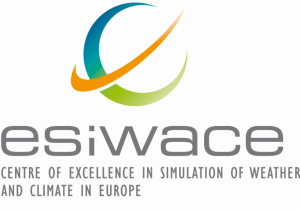
ESiWACE is one of eight newly funded Centers of Excellence. Our goal is to improve efficiency and productivity of numerical weather and climate simulation on high-performance computing platforms by supporting the end-to-end workflow of global Earth system modelling in HPC environment. This will be obtained by improving and supporting: 1) Scalability of models, tools and data management on state-of-the-art supercomputer systems, 2) Usability of models and tools throughout the European HPC eco-system, and 3) Exploitability of the huge amount of resulting data.
ESiWACE will develop solutions for cross-cutting HPC challenges particular to the weather and climate domain ranging from the development of specific software products to the deployment of user facing services for both, computing and storage. ESiWACE leverages two established European networks, namely the European Network for Earth System modelling (ENES) the European Centre for Medium-Range Weather Forecasts.
Our contact for ESiWACE is Dr. Joachim Biercamp, Coordinator for the ESiWACE project.

Located in Barcelona, the BSC is the national supercomputing centre in Spain. BSC specialises in high-performance computing (HPC) at all levels: hardware architecture, programming models, code optimization or basic and applied computational mechanics. BSC manages MareNostrum, one of the most powerful supercomputers in Europe, located in the Torre Girona chapel. |
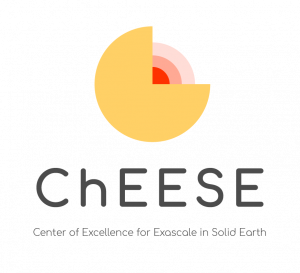 ChEESE is a Center of Excellence (CoE) in the domain of Solid Earth targeting the preparation of 10 Community flagship European codes for the upcoming pre-Exascale (2020) and Exascale (2022) supercomputers. It addresses 15 scientific, technical, and socio-economic Exascale Computational Challenges in Solid Earth and develops 12 Pilot Demonstrators services oriented to society on critical aspects of geohazards like hazard assessment, urgent computing, and early warning. The ChEESE CoE consortium consists of 13 partners including a range of world-class academic and industry partners from across Europe, bringing together High Performance Computing and High-end Data Analysis transversal European institutions in charge of operational geophysical monitoring networks, Tier-0 supercomputing centers, academia, hardware developers, and third-parties from SMEs, Industry and public governance bodies (civil protection). Our contact at ChEESE CoE is Dr. Arnau Folch, environmental simulation group manager at BSC and ChEESE project leader. |
| CompBioMed is a user-driven Centre of Excellence (CoE) in Computational Biomedicine, designed to nurture and promote the uptake and exploitation of high performance computing within the biomedical modelling community. Our user communities come from academia, industry and clinical practice. CompBioMed1, funded from Sept 2016-Sept 2019 through the European Union’s H2020 research and innovation programme (Grant no 675451), has already achieved notable successes in the development of applications, training and efficient access mechanisms for using HPC machines and clouds in computational biomedicine. Their work has provided the ability to integrate clinical datasets with HPC simulations through fully working computational pipelines designed to provide clinically relevant patient-specific models. Furthermore, they have developed and implemented a highly successful training programme, targeting the full range of medical students, biomedical engineers, biophysics, and computational scientists. They have now extended the CoE for another 4 years of funding through CompBioMed2 (Grant no 823712), enabling them to serve the community for a total of 7 years. Our contact for CompBioMed2 is Dr. Emily Lumly, Project Manager for both the CompBioMed and CompBioMed2 projects. |
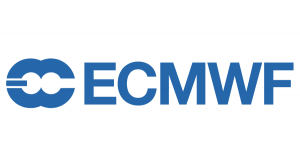 The European Centre for Medium-Range Weather Forecasts (ECMWF) is an independent intergovernmental organisation supported by 34 states. ECMWF is both a research institute and a 24/7 operational service, producing and disseminating numerical weather predictions to its Member States. This data is fully available to the national meteorological services in the Member States. The Centre also offers a catalogue of forecast data that can be purchased by businesses worldwide and other commercial customers. The supercomputer facility (and associated data archive) at ECMWF is one of the largest of its type in Europe and Member States can use 25% of its capacity for their own purposes. The organisation was established in 1975 and now employs around 360 staff from more than 30 countries. ECMWF is one of the six members of the Co-ordinated Organisations, which also include the North Atlantic Treaty Organisation (NATO), the Council of Europe (CoE), the European Space Agency (ESA), the Organisation for Economic Co-operation and Development (OECD), and the European Organisation for the Exploitation of Meteorological Satellites (EUMETSAT). core mission is to produce numerical weather forecasts and monitor the Earth system, carry out scientific and technical research to improve forecast skill, and maintain an archive of meteorological data. ECMWF also provides advanced training to scientific staff in our Member and Co-operating States and assists the WMO with its programmes. Our contact for ECMWF is Dr. John Hanley, Analyst, Forecast Department at ECMWF. |

ELEM Biotech is a biomedical software company which creates software products for the medical industry to optimize and test medical treatments. The company is a spin-off from Barcelona Supercomputing Centre (BSC), BarcelonaTech (UPC) and the Spanish Scientific Council (CSIC). It has offices in Barcelona and Bristol. ELEM’s Virtual Humans Factory provides digital avatars to perform complex simulations at organ level (now focused on cardiovascular and respiratory systems). ELEM Biotech has rights to commercialise Alya Red, a project of BSC for simulating a human heart and part of the Alya Project (see previous). |

The Netherlands eScience Center is the Dutch national centre of excellence for the development and application of research software to advance academic research. The eScience Research Engineers at the center work together with researchers in academia, enabling them to address compute-intensive and data-driven problems within their research. The eScience Center is involved in more than 90 collaborative research projects, spanning many different research disciplines and application domains. Many of the projects are related to HPC and multiscale applications. |
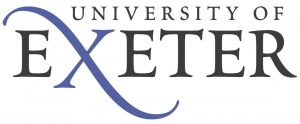
TThe University of Exeter combines world class research with excellent student satisfaction at its campuses in Exeter and Cornwall. It is a member of the Russell Group of leading research-intensive universities. Formed in 1955, the University has 22,085 students from more than 130 different countries. Its success is built on a strong partnership with its students and a clear focus on high performance. |

HPC and Big Data Technologies for Global Systems (HiDALGO) is a European project funded by the Horizon 2020 Framework Programme of the European Commission, comprising 13 partner institutions from seven countries. Understanding major global challenges as well as their underlying parameters is a vital issue in our modern world. Various examples, such as health care, the transition of green technologies or the evolution of the global climate up to hazards and stress tests for the financial sector demonstrate the complexity of the involved simulation systems. This high level of complexity becomes even more evident in the case of coupled systems: the problem statements and their corresponding parameters depend on each other, which results in very involved interconnected simulations. HiDALGO’s mission is to develop novel methods, algorithms and software for HPC and HPDA to accurately model and simulate the complex processes which arise in connection with major global challenges. |
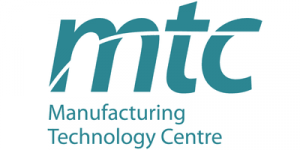
The Manufacturing Technology Centre (MTC) was established in 2010 as an independent Research & Technology Organisation (RTO) with the objective of bridging the gap between academia and industry -often referred to as ‘the valley of death’. MTC provide integrated manufacturing system solutions for customers large and small, across sectors as diverse as automotive, aerospace, rail, informatics, food & drink, construction / civil engineering, electronics, oil & gas and defence. With over 700 employees at present, MTC helps companies manufacture faster, at a consistently higher quality and lower cost, in an agile environment in partnership with industry and academia. MTC’s facilities provide a fantastic environment for the development and demonstration of new technologies on an industrial scale, offering flexibility to their growing membership, clients and research partners. MTC’s role has also increased to cover not only research and development (R&D) but also training, advanced manufacturing management as well as factory design. Their clear vision is to inspire Great British manufacturing on the global stage. |

Element Digital Engineering are a global team of experts with deep technical expertise in engineering, applied mathematics, and technical software. We leverage data, mathematics, and digital tools to provide insights and innovative solutions for today’s most complex engineering and technology challenges. We offer digital solutions throughout product lifecycles and across industries adding value to your operations. Our capabilities include modeling & simulation, digital twins, data science & machine learning, software engineering, and much more. We combine technical expertise with commercial and industry experience, gained from leadership and senior management roles in engineering and technology. |
The Poznan University of Medical Sciences (PUMS) is one of the best and largest medical universities in Poland, with 100 years of sound academic experience and a great growth momentum. PUMS is currently recognized as one of the largest educational, research, and clinical centers in Poland. PUMS maintains and develops various forms of cooperation with foreign research centers and universities worldwide. Advanced research at PUMS is carried out in virtually every field of modern medicine and pharmacy including the stability of drugs, pharmacokinetics and biochemistry, the synthesis and analysis of new therapeutic agents, phytochemistry, toxicology and pharmacology. Our contact for PUMS is Prof. Judyta Cielecka-Piontek , Head of Pharmacognosy Department at PUMS. |

Nuclear fusion, the process that powers the Sun and the stars, can play a big part in our carbon-free energy future. At the UK Atomic Energy Authority (UKAEA) scientists and engineers are working with partners around the globe, in Universities, in National Laboratories and in industry to develop fusion as a new source of cleaner energy for tomorrow’s power stations. UKAEA owns and operates the Culham Centre for Fusion Energy (CCFE), the world’s leading laboratory for fusion research. CCFE is based at Culham Science Centre in Oxfordshire. |

The University of Campania “Luigi Vanvitelli” (previously Second University of Naples – SUN), was established in 1991. Currently, there are thirty thousand students attending 16 Departments, and 1000+ tenured professors. The Dipartimento di Ingegneria performs research and educational activities in several scientific areas, including civil, envoronmental, mechanical and aerospace engineering, industrial electronics and electrical power systems, robotics, physics, telecommunications and information systems. SUN-DI is participating in 12 EC projects (one, mOSAIC, as Coordinator) and several national projects. |
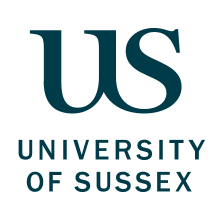
The University of Sussex is a public research university located in Falmer, Sussex, England. Its campus is surrounded by the South Downs National Park and it is a short distance away from central Brighton. The University received its Royal Charter in August 1961. More than a third of its students are enrolled in postgraduate programs and approximately a third of staff are from outside the United Kingdom. The University has a diverse community of nearly 20,000 students, with around one in three being EU and other overseas students, and over 1000 academics, representing over 140 different nationalities Sussex counts 5 Nobel Prize winners, 15 Fellows of the Royal Society, 10 Fellows of the British Academy, 24 fellows of the Academy of Social Sciences and a winner of the Crafoord Prize among its faculty. |
